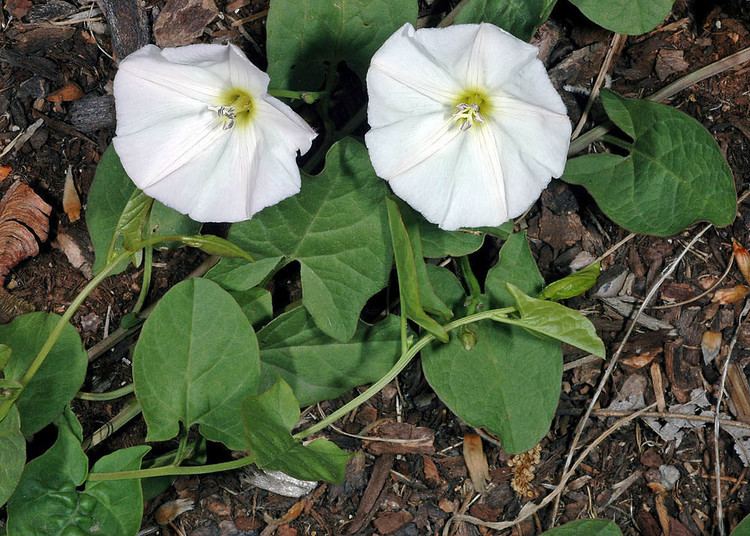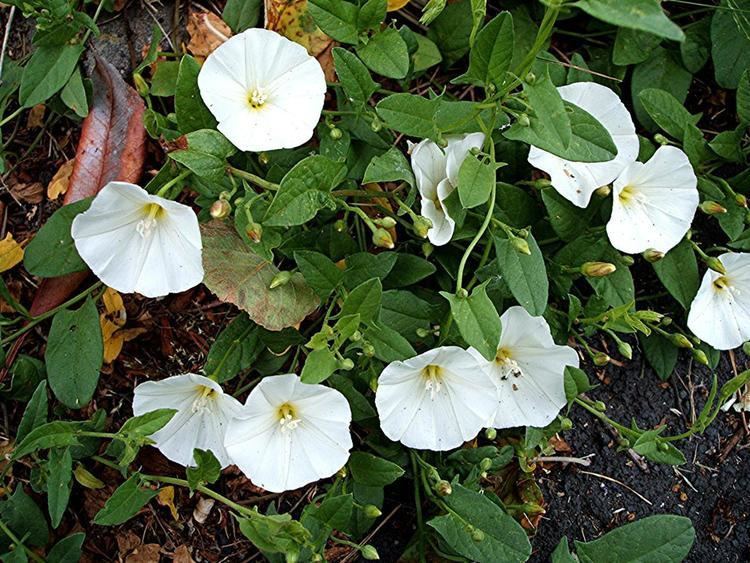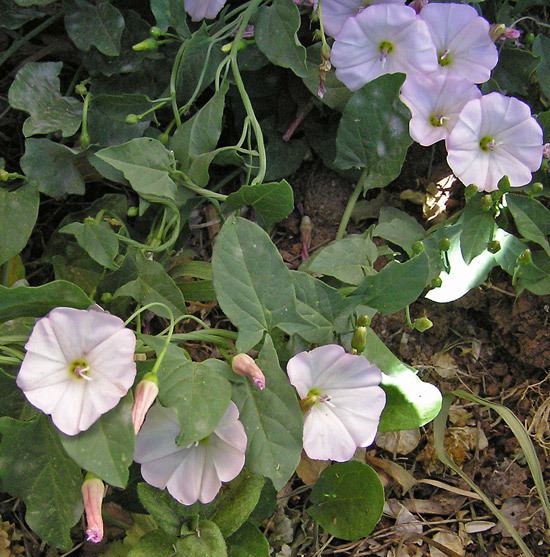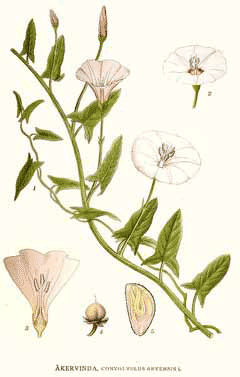Rank Species | Higher classification Bindweed | |
 | ||
Similar Bindweed, Creeping Thistle, Calystegia sepium, Cleavers, Cirsium | ||
Field bindweed convolvulus arvensis noxious weed ninja gardening episode 40
Convolvulus arvensis (field bindweed) is a species of bindweed in the morning glory family (Convolvulaceae), native to Europe and Asia. It is a climbing or creeping herbaceous perennial plant growing to 0.5–2 m high. There are two varieties:
Contents
- Field bindweed convolvulus arvensis noxious weed ninja gardening episode 40
- Field bindweed convolvulus arvensis 2012 09 08
- Description
- Ecological Impacts
- Toxicity
- Control and Management
- References

Other common names, mostly obsolete, include lesser bindweed, European bindweed, withy wind (in basket willow crops), perennial morning glory, smallflowered morning glory, creeping jenny, and possession vine. It is called leli in Punjabi

Field bindweed convolvulus arvensis 2012 09 08
Description

The leaves are spirally arranged, linear to arrowhead-shaped, 2–5 cm long and alternate, with a 1–3 cm petiole. The flowers are trumpet-shaped, 1-2.5 cm diameter, white or pale pink, with five slightly darker pink radial stripes. Flowering occurs in the mid-summer, when white to pale pink, funnel-shaped flowers develop. Flowers are approximately 0.75-1 in. (1.9-2.5 cm) across and are subtended by small bracts. Fruit are light brown, rounded and 1/8 in. (0.3 cm) wide. Each fruit contains 2 seeds that are eaten by birds and can remain viable in the soil for decades.

Although it produces attractive flowers, it is often unwelcome in gardens as a nuisance weed due to its rapid growth and choking of cultivated plants. It was most likely introduced into North America as a contaminant in crop seed as early as 1739, as an invasive species. Plants typically inhabit roadsides, grasslands and also along streams. Its dense mats invade agricultural fields and reduce crop yields; it is estimated that crop losses due to this plant in the United States exceeded US$377 million in the year 1998 alone.

In one of the tales collected by Jacob and Wilhelm Grimm, Our Lady's Little Glass, this flower is used by Our Lady to drink wine with when she helps free a wagoner's cart. The story goes on to say that "the little flower is still always called Our Lady's Little Glass."
Ecological Impacts

Field bindweed intertwines and topples native species. It competes with other species for sunlight, moisture and nutrients. It poses threats to restoration efforts and riparian corridors by choking out grasses and forbs. It can decrease habitat biodiversity. It is one of the most serious weeds of agricultural fields in temperate regions of the world.
Toxicity
Bindweed contains several alkaloids, including pseudotropine, and lesser amounts of tropine, tropinone, and meso-cuscohygrine.
Control and Management
Field bindweed is difficult to eradicate because the seeds remain viable in soil for up to 20 years. One plant can produce up to 500 seeds. The deep, extensive root system stores carbohydrates and proteins and allows it to sprout repeatedly from fragments and rhizomes following removal of aboveground growth.
